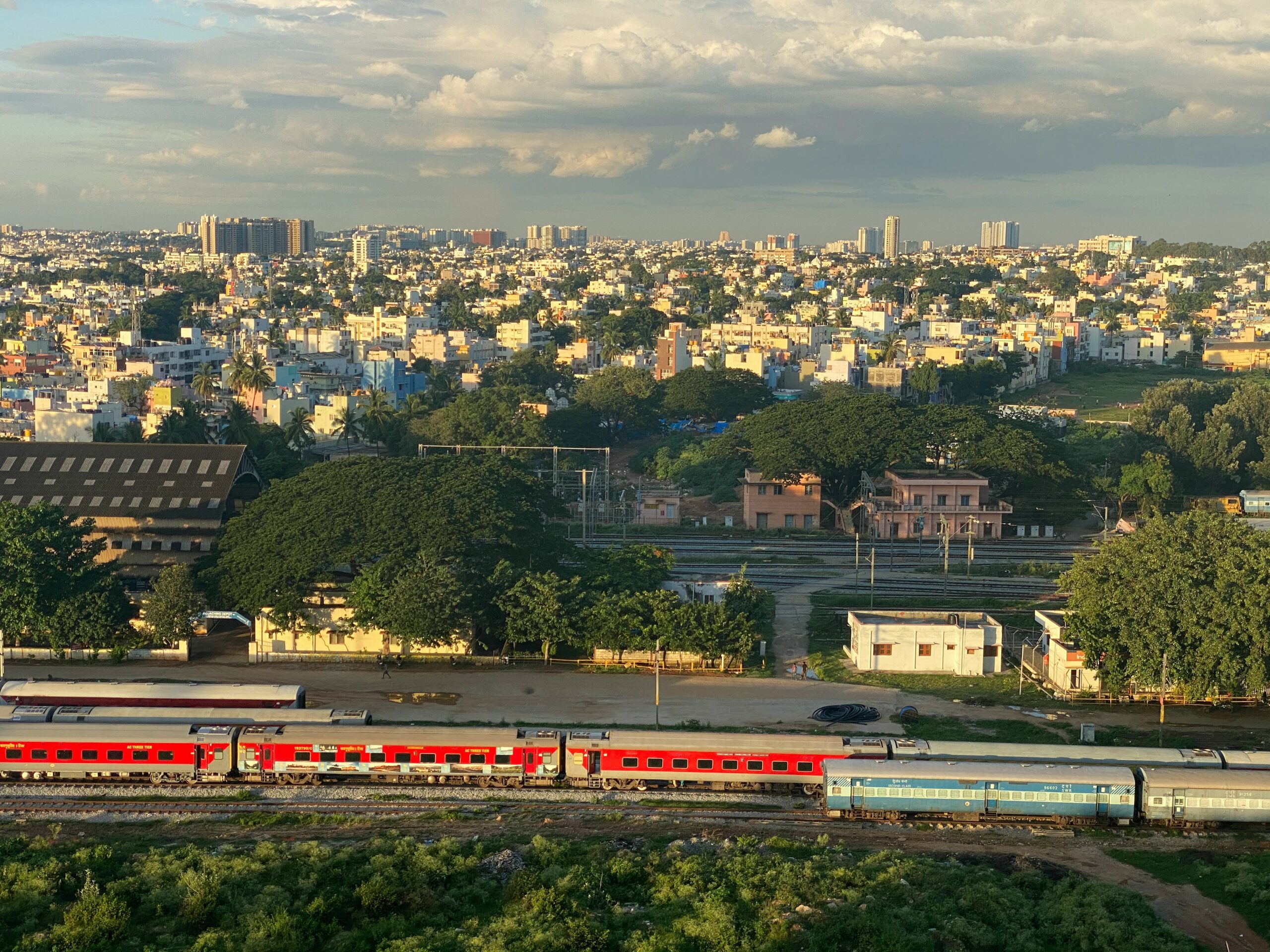“Around the World” : India

Navigating India’s Path to Sustainable Mobility and Environmental Stewardship
🌏 India’s commitment to sustainability has taken center stage with its ambitious pledge at the COP26 summit to achieve net-zero emissions by 2070. This commitment is backed by concrete objectives, showcasing a national dedication to transforming urban mobility landscapes.
🍃 The nation is committed to cutting its CO2 emissions by 1 billion tons. Furthermore, India intends to reduce the carbon intensity of its economy by less than 45%, aligning economic growth with sustainable practices.
🚗 Urban centers like Mumbai, Delhi, and Bengaluru rank among the most congested cities globally, largely due to a growing dependence on personal vehicles and an underdeveloped public transportation infrastructure. The Motor Vehicle Act, 1988, along with its 2019 amendments, attempts to address these issues by defining ‘aggregator’ roles and setting licensing requirements, but challenges remain, particularly around the legal framework for carpooling.
🚙 Despite the evident need for robust public transportation, there’s a rising demand for SUVs, marking a departure from India’s “small is beautiful” ethos. This trend contradicts the goals of reducing congestion and emissions, underscoring the need for a reevaluation of urban mobility preferences.
🔗 To combat these challenges, initiatives like carpooling and car-sharing apps are emerging to promote shared mobility. Influential voices, such as Sunita Narain of the Centre for Science and Environment, advocate for a comprehensive overhaul of urban transport systems. Echoing Narain’s words, ‘we should design cities for people, not cars,’ the vision for change is clear: to create not only a modern and efficient public transport system but also one that is fair and environmentally friendly.
🤝 While India’s sustainability and mobility goals are laudable, realizing them requires a collaborative effort. Policymakers, industry stakeholders, and citizens must unite to create a mobility ecosystem that aligns with the nation’s environmental ambitions. The journey is complex, because while India’s burgeoning population and dynamic economy have accelerated emissions, with 3.9 billion metric tons of CO₂ equivalent emitted in 2021 (7% of the world’s total emissions), its per capita emissions are still below the global average. Navigating this complexity requires innovative and sustained efforts to align India’s rapid development with sustainable practices.
#SustainableMobility #UrbanPlanning #EnvironmentalStewardship #India #RenewableEnergy #PublicTransportation #Innovation
Sources:
Mordor Intelligence WRI India Springer Link UITP S&P Global Outlook India Statista 1 Statista 2 Hindus Time Inc42














